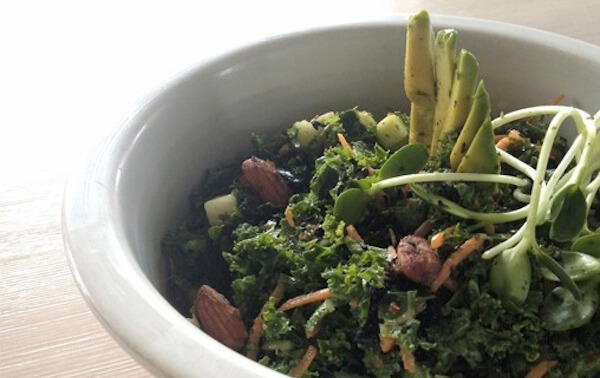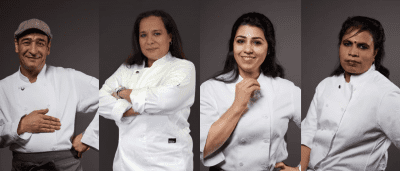What We Talk About When We Talk About Orthorexia

Raw kale and seaweed salad (image: goop)
Last week, Jordan Younger, the blogger formerly known as “The Blonde Vegan,” admitted in a post on her website that she had been struggling with orthorexia nervosa, a condition first identified in 1997 as an unhealthy obsession with healthy eating. Late last week, New York Magazine published a list of “10 Ways to Spot an Orthorexic,” since retitled “10 Ways to Recognize Orthorexia” (though the URL tag remains the same), which included “They proselytize” and “They denigrate others’ unhealthy habits”—two tell-tales that would diagnose much of New York City with the disorder.
On her blog, Younger describes the downward spiral of her veganism, and her rapidly shrinking “bubble of restriction.” Eventually, she writes, she was eating “entirely vegan, entirely plant-based, entirely gluten-free, oil-free, refined sugar-free, flour-free, dressing/sauce-free, etc. and lived my life based off of when I could and could not eat and what I could and could not combine.” Her “aha! moment” came when she and two friends walked a mile from one Juice Press location to another Juice Press location so that Younger could find the pressed juice she wanted.
Disordered eating is a real affliction, in all its forms, and it manifests in anxieties and behavior modifications that are at times impossible to make sense of from the outside. In our hyper–health-conscious culture, there are as many things not to eat as there are brick-and-mortar venues to play out the latest dietary paranoia. Once the specter of gluten has been raised, it can be difficult to ignore.
But orthorexia—more so than anorexia, bulimia, and binge eating disorder, all of which are recognized by the DSM-5—necessarily takes place in a very particular sphere, one which many New Yorkers move into and out of with such ease that we may cease to recognize its borders, or pay attention to its signs. A quick Google search reveals more than one map of gluten-free eats in New York City and a “vegan” Yelp category, which together trace a rough outline of a very specific culture of food in New York City—one with the means to eschew all but a few bricks of the food pyramid.
I have worked in offices in which half a cupcake inspired an afternoon of hand-wringing and verbal self-flagellation, and Monday’s “How was your weekend?” was answered with a run-down of everything eaten that should not have been. A former roommate of mine bought all-natural almond butter and sermonized on egg whites over ninety minutes of breakfast prep for one. That “The Blonde Vegan”—now known as “The Balanced Blonde”—is the poster-child du jour for orthorexia may be in keeping with a certain stereotype of well-to-do urban white yogis, but this is a criticism too easily made at a time when childhood obesity approaches 20 percent and more than half of Americans are expected to be overweight by the year 2030. Between communities who can afford to eat healthily, even to ultimately unhealthy extremes, and those who can’t, the pendulum swings too far both ways.
Increasingly in popular culture, food is conflated with morality: righteous eating is righteous living, and careless eating is careless living. A salad becomes an act of piety, a slice of pizza a mortal sin. The overweight (and often the average- and healthy-weight) are shamed not only for their bodies but for their perceived poor self-control, and this obesity-as-scarlet-letter fallacy is reinforced in myriad, micro ways. Weight loss is congratulated as heartily as the birth of a baby or a college graduate, and in some circles going down a dress size is tantamount to winning an award.
Orthorexics end up starving themselves in pursuit of purity—a pursuit possible only in an environment where starvation is an anomaly. An environment where people juice-cleanse and decline free hors d’oeuvres, and celebratory office food is nibbled with audible self-loathing. We have a duty to be compassionate toward those who suffer from eating disorders, and to promote healthy relationships with food. But we should hurry to remember that orthorexia is a crisis of excess—an excess of rules, restrictions, and substitutions in a wide field of choice—whereas endemic obesity and ill nutrition is ultimately a crisis of scarcity—scarcity of nutritional resources and affordable healthy food.
Whether extreme food restrictions are the byproduct of hard health science or of unfettered dietary choices in search of divine guidance, there is a troubling similarity between coverage of fad diets and “fad” allergies and disorders, as though Celiac Disease were the new Atkins. Orthorexia may be having a moment, so to speak, but the disorder’s implications run deeper than mere fad dieting.
You might also like 



















